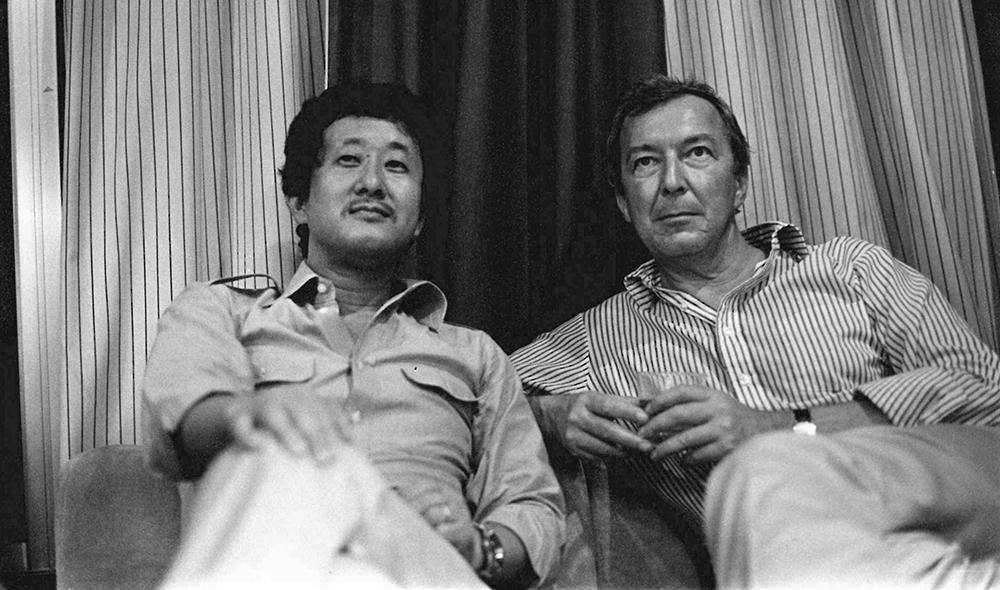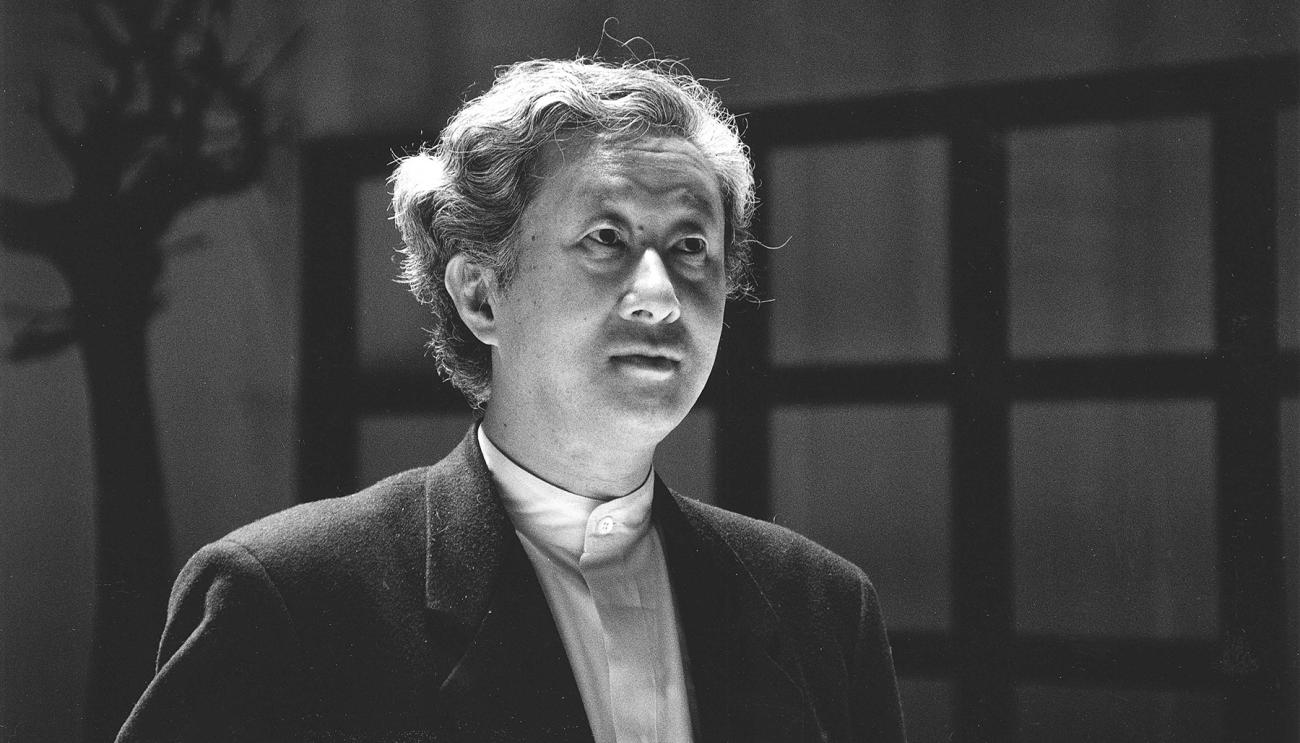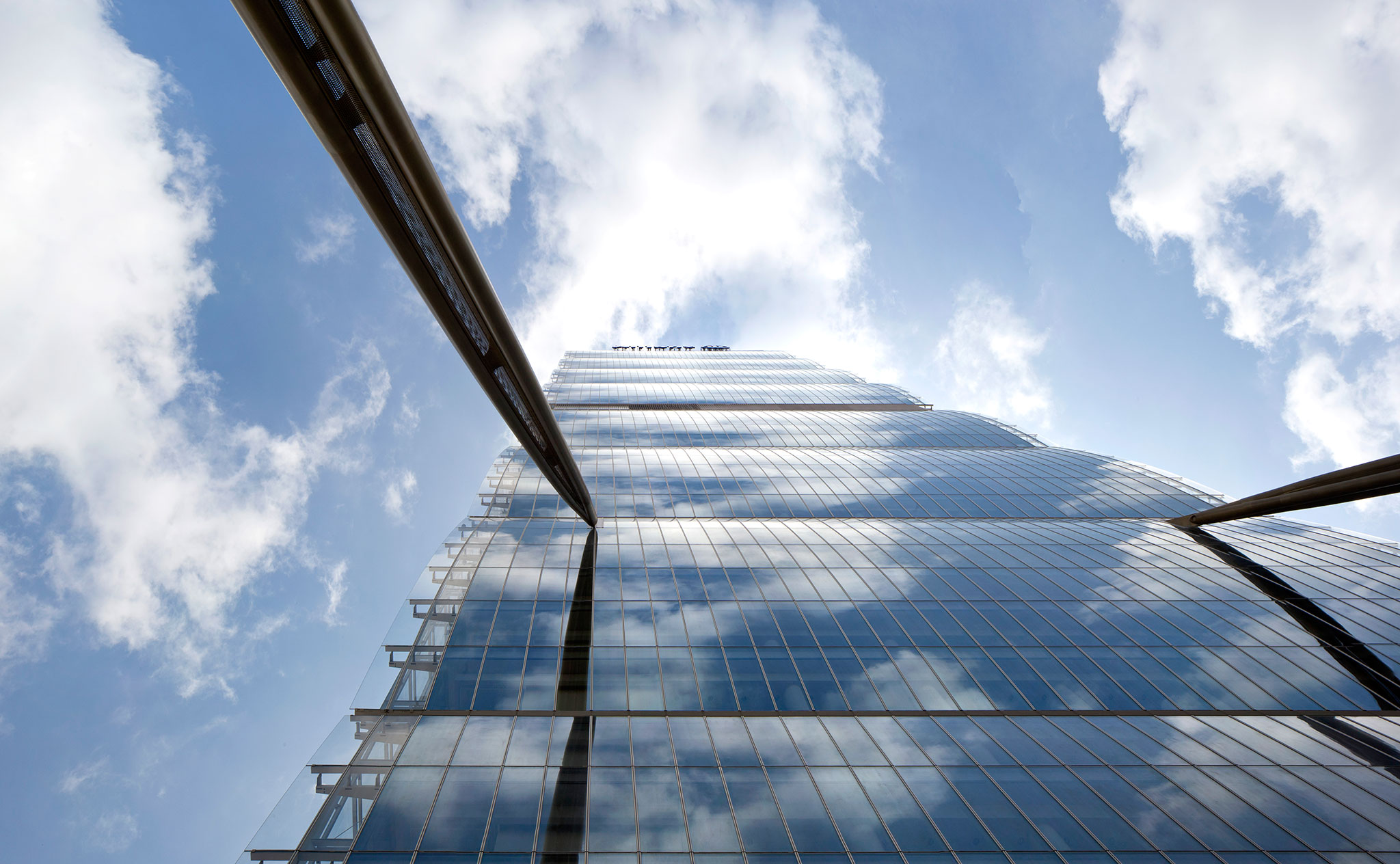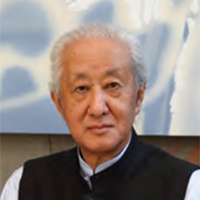Isozaki graduated from the Department of Architecture in the Faculty of Engineering at the University of Tokyo in 1954 and began his career with an apprenticeship under the guidance of 1987 Pritzker Prize Laureate Kenzo Tange. He established Arata Isozaki & Associates in 1963, after the Allied occupation when Japan had regained its sovereignty and was seeking physical rebuilding amidst political, economic and cultural uncertainty from the decimation of WWII.

Isozaki and Jasper Johns. Photograph courtesy of Shigeo Anzai
Isozaki demonstrated a worldwide vision that was ahead of his time and facilitated a dialogue between East and West. He emerged as an international leader in architecture in the 1980s, with his first overseas commission, the Museum of Contemporary Art, Los Angeles (1981-1986 California, USA).
Other prominent international works, of his more than one hundred total built projects include: Palau Sant Jordi (1983-1990 Barcelona, Spain), designed for the 1992 Summer Olympic Games; Team Disney Building (1987-1990, Florida, USA); Shenzhen Cultural Center (1998-2007 Shenzhen, China); Pala Alpitour (2002-2005 Turin, Italy), ice hockey stadium for the 2006 Winter Olympic Games; Central Academy of Fine Arts, Art Museum (2003-2008 Beijing, China); Allianz Tower (2003-2014 Milan, Italy); Qatar National Convention Center, (2004-2011 Doha, Qatar); Shanghai Symphony Hall (2008-2014 Shanghai, China); and Hunan Provincial Museum (2011-2017 Changsha, China).
In the 1960s, Isozaki envisioned City in the Air (1962 Tokyo, Japan), a futuristic plan for Shinjuku consisting of elevated layers of buildings, residences and transportation suspended above the ageing city below, in response to the rapid rate of urbanization. Although it was unrealized, Isozaki went on to plan cities in accelerating economies, with his most recent developments in China and the Middle East. Through his critical writings, and as a jury member for important architecture competitions, he has played a significant role in bringing to realization the concepts of young architects around the world. Six decades of his work include philosophy, visual art, design, music, films, and plays, alongside his iconic buildings.

Opera de Lyon. Photograph courtesy of Pritzker
He is the recipient of the Annual Prize, Architectural Institute of Japan, for the Ōita Prefectural Library and The Museum of Modern Art, Gunma (1967 and 1975 respectively, Japan), L’Ordre des Arts et des Lettres (1997 Officier, France), RIBA Gold Medal for architecture (1986 United Kingdom), Leone d’Oro, Venice Architectural Biennale, as commissioner of Japanese Pavilion (1996 Italy), Gran Cruz de la Orden del Mérito Civil (1997 Spain), Ordine al Merito della Repubblica Italiana (2007 Italy), and The Lorenzo il Magnifico Lifetime Achievement Award, Florence Biennale (2017). He was an honorary member of the Royal Academy of Arts (1994) and the American Academy of Arts and Letters (1998), and a member of the Japan Arts Academy (2017). He was appointed to the first Pritzker Prize Jury in 1979 and continued on as a member for five additional years.

Allianz Tower. Photograph courtesy of Allesandra Chemollo
Solo exhibitions featuring the work of Isozaki have included Arata Isozaki: Architecture 1960-1990 at the Museum of Contemporary Art, Los Angeles (California, USA) and Tokyo Station Gallery (Tokyo, Japan); Arata Isozaki: Works in Architecture at the Brooklyn Museum (New York, USA), Galleria D’ Arte Moderna, Comune di Bologna (Bologna, Italy), The Netherlands Architecture Institute (Rotterdam, The Netherlands), The National British Architecture Institute (London, United Kingdom), Miro Museum (Barcelona, Spain) and Moni Lazariston (Thessaloniki, Greece); Arata Isozaki – Electric Labyrinth at Castello di Rivoli, Museo d’Arte Contemporanea (Torino, Italy) and Serralves Museum of Contemporary Art (Porto, Portugal); and Arata Isozaki UNBUILT at the Central Academy of Fine Arts (Beijing, China), Shanghai Urban Planning Exhibition Centre (Shanghai, China) and Guangdong Museum of Art (Guangzhou, China).
Isozaki has served as a visiting professor at several U.S. universities including Columbia University, New York (New York, USA); Harvard University (Cambridge, MA, USA) and Yale University (New Haven, Connecticut, USA). He is based in Okinawa with offices operating in Japan, China, Italy and Spain.



































